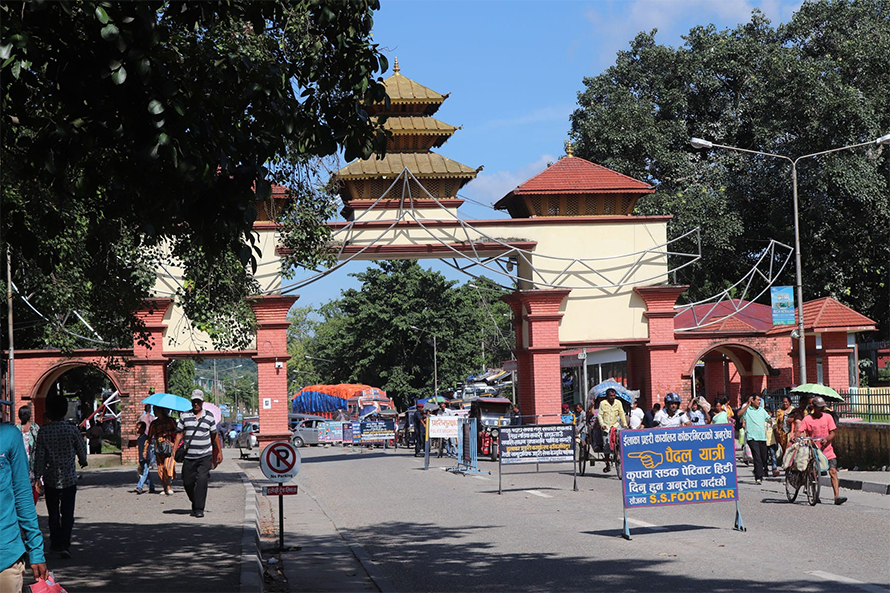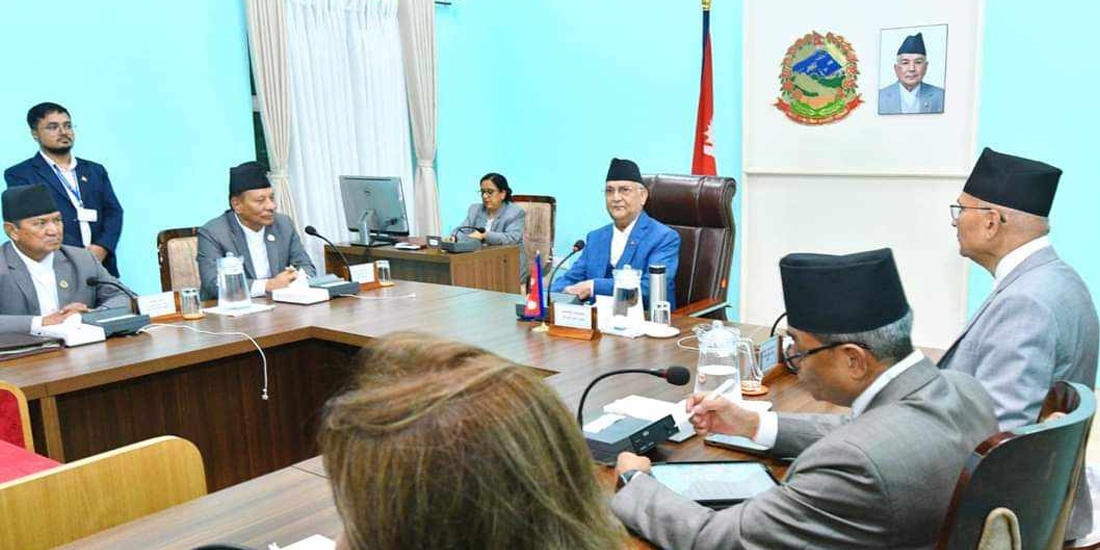Youth Unemployment in Nepal: A Silent Disaster in the Making

In the land of stunning landscapes and soaring mountains, a silent crisis is haunting Nepal’s vibrant youth. As the sun rises over the breathtaking Himalayas, it illuminates a harsh reality: a growing tide of unemployment that threatens to engulf an entire generation. This write up delves deep into the pressing issue of youth unemployment in Nepal, exploring its underlying causes, devastating consequences, and, most importantly, the potential solutions that lie within our grasp.
Nepal’s youths, brimming with ambition, creativity, and determination, are facing an uphill battle in their quest for meaningful employment. The statistics paint a sobering picture: with an alarming youth unemployment rate that surpasses the national average, the country stands at a crossroads, grappling with the repercussions of a demographic dividend gone awry.
Unemployment among the young not only stifles their dreams and aspirations but also undermines the nation’s progress. Lost opportunities, wasted potential, and a sense of hopelessness permeate the air, threatening to dampen the spirit of a nation known for its resilience.
Yet, amid these dark clouds, a glimmer of hope emerges. This article seeks to shed light on the multifaceted causes behind this crisis, ranging from an inadequate education system to a lack of job opportunities and a widening skills gap. Moreover, it explores the far-reaching consequences of youth unemployment, from social unrest to economic stagnation, offering a stark reminder of the urgency to act.
Youth unemployment is a critical issue affecting many countries worldwide, including Nepal. As a developing nation, Nepal faces numerous challenges in addressing the high rate of unemployment among its youth population. By understanding the factors contributing to this issue and implementing appropriate strategies, Nepal can strive towards creating a brighter future for its young workforce.
Nepal’s overall unemployment rate has remained a concern, with the latest data indicating an unemployment rate of 10.6 percent (World Bank, 2021). However, the youth unemployment rate, which primarily affects individuals between the ages of 15 and 29, stands at a staggering 19.4 percent (Central Bureau of Statistics, 2021). This significant disparity in youth unemployment emphasizes the urgent need to address this issue effectively.
Causes of youth unemployment
- Inadequate education system: The education system in Nepal often fails to equip young individuals with the necessary skills and knowledge demanded by the job market. The curriculum may not be aligned with industry requirements, resulting in a gap between education and employability.
- Limited job opportunities: The availability of suitable jobs is a significant challenge. The Nepalese economy faces structural issues, with limited formal sector employment opportunities compared to the growing number of job seekers. This imbalance leads to high competition for a small number of positions.
- Skills mismatch: There exists a significant gap between the skills possessed by youth and the skills demanded by employers. Many young individuals lack the specific technical skills and practical experience required by industries, leading to difficulties in securing employment.
- Rural-urban divide: Disparities between urban and rural areas contribute to youth unemployment. Opportunities are often concentrated in urban centers, leaving rural youth with limited access to education, training, and employment prospects.
- Lack of entrepreneurial ecosystem: Entrepreneurship can be an alternative path for employment. However, the absence of a conducive ecosystem, including access to finance, mentorship, and a supportive business environment, hampers the growth of entrepreneurial ventures.
- Gender inequality: Gender-based discrimination and traditional societal norms affect employment prospects for young women. They often face limited opportunities, lower wages, and barriers to accessing education and training.
- Political instability and policy constraints: Periods of political instability and policy constraints can hinder economic growth and job creation. Uncertainty in governance, inadequate infrastructure, and inconsistent policies can discourage investment and business expansion.
- Migration and brain drain: The allure of better opportunities abroad leads to significant youth migration. This brain drain exacerbates the unemployment issue, as skilled individuals leave the country, creating a shortage of talent domestically.
Addressing these causes requires a comprehensive approach that focuses on improving the education system, fostering entrepreneurship, bridging the skills gap, promoting inclusive growth, and creating an enabling environment for investment and job creation.
Consequences of youth unemployment
Youth unemployment in Nepal has several consequences, which are outlined below along with examples:
- Economic consequences: Youth unemployment can hinder economic growth and development by reducing productivity and stifling innovation. When young individuals are unable to find employment, their potential contribution to the economy remains untapped. This leads to a loss of economic output and a burden on social welfare systems.
Example: A high youth unemployment rate means a large portion of the population is unable to contribute to the country’s GDP, limiting overall economic progress.
- Social unrest and discontent: Youth unemployment can lead to social unrest, dissatisfaction, and a sense of hopelessness among the unemployed youth. This can fuel social tensions, protests, and even acts of violence as frustrated individuals seek to voice their grievances.
Example: In the past, Nepal has witnessed protests and demonstrations by unemployed youth demanding better job opportunities and economic prospects.
- Poverty and inequality: Unemployment, particularly among young individuals, can perpetuate poverty and exacerbate income inequality. Without adequate employment, individuals and their families may struggle to meet basic needs, leading to a cycle of poverty and widening income disparities.
Example: High youth unemployment rates can result in a higher prevalence of poverty among young people and contribute to the persistence of intergenerational poverty.
- Brain drain: Another consequence of youth unemployment is the potential brain drain, where talented and skilled individuals seek opportunities abroad. This drains the country of its intellectual capital and exacerbates the skills gap, making it more challenging to drive economic growth and development.
Example: Many highly educated and skilled Nepali youth choose to migrate to countries like the United States, Australia, Canada and European countries in search of better employment opportunities.
- Social and psychological impact: Unemployment can have detrimental effects on mental health, self-esteem, and overall well-being. Young individuals may experience stress, depression, and a loss of purpose due to the lack of meaningful employment.
Example: Unemployed youth may feel a sense of frustration, helplessness, and social isolation, which can have long-term negative impacts on their mental and emotional health.
- Social dependency and crime: Prolonged unemployment can lead to increased social dependency on family and social welfare systems. It can also contribute to a rise in crime rates as individuals resort to illegal activities to sustain themselves financially.
Example: In the absence of employment opportunities, some young individuals may engage in criminal activities as a means of survival or out of frustration and desperation.
Addressing youth unemployment and its consequences requires a multi-faceted approach that includes creating employment opportunities, improving education and skills training, fostering entrepreneurship, and promoting inclusive economic growth.
Solutions to youth unemployment
Addressing youth unemployment in Nepal requires a comprehensive approach involving various stakeholders. Here are several possible solutions, with examples:
- Enhancing education and skills training: Improving the quality and relevance of education is crucial. This involves updating curricula to align with market demands, promoting vocational training, and incorporating practical skills development. Partnerships between educational institutions and industries can facilitate internships, apprenticeships, and on-the-job training.
Example: Establishing collaborations between technical schools and local businesses to provide students with hands-on experience and relevant skills training.
- Promoting entrepreneurship: Fostering an entrepreneurial ecosystem can empower youth to create their own employment opportunities. This entails providing access to finance, mentoring programs, business incubators, and simplified procedures for starting and operating businesses.
Example: Initiating entrepreneurship development programs that offer financial support, mentorship, and training to aspiring young entrepreneurs.
- Encouraging public and private sector collaboration: Close collaboration between the public and private sectors is essential to create a favorable business environment. This can involve public-private partnerships, policy dialogues, and joint initiatives to promote job creation, investment, and economic growth.
Example: Establishing industry-specific task forces comprised of government representatives, industry leaders, and youth representatives to identify sector-specific employment opportunities and develop targeted strategies.
- Promoting rural development and agriculture: Investing in rural development and agriculture can create employment opportunities for rural youth. This includes improving access to agricultural resources, promoting modern farming techniques, and supporting value-added agricultural activities.
Example: Introducing programs that provide training, access to credit, and marketing support to young farmers, encouraging them to engage in commercial agriculture.
- Encouraging foreign direct investment (FDI): Attracting FDI can spur economic growth and create job opportunities. Providing a conducive investment climate, streamlining bureaucratic procedures, and offering incentives to foreign investors can encourage them to establish businesses in Nepal.
Example: Establishing special economic zones or industrial parks with attractive incentives to attract foreign investors and stimulate job creation.
- Strengthening labor market information systems: Developing robust labor market information systems can bridge the information gap between job seekers and employers. This includes collecting and disseminating accurate data on job vacancies, skill requirements, and labor market trends.
Example: Establishing online platforms or job portals that provide real-time information on job vacancies, skill requirements, and training opportunities.
- Encouraging youth-focused policies: Formulating and implementing youth-focused policies that prioritize job creation, skill development, and social inclusion can address the specific needs and aspirations of young individuals.
Example: Implementing targeted youth employment schemes that offer wage subsidies to employers hiring young job seekers, thereby incentivizing youth employment.
These solutions, when implemented in a coordinated manner, have the potential to tackle youth unemployment in Nepal, unleash the potential of the young workforce, and drive sustainable economic development.
Igniting the flames of change
The challenges of youth unemployment are multi-dimensional, rooted in a complex interplay of social, economic, and political factors. Inadequate education systems, limited job opportunities, skills mismatches, and gender disparities are the daunting barriers that stand tall, blocking the path to progress. But, as the resilient spirit of Nepal’s youth has shown time and again, no obstacle is insurmountable.
Amid the adversity, rays of hope pierce through the dark clouds of despair. The seeds of change have been sown, and solutions are within reach. By transforming our education system to be dynamic and industry-relevant, nurturing entrepreneurship with unwavering support, and promoting a fertile ground for investment and innovation, we sow the seeds of a brighter tomorrow.
It is time to break free from the shackles of convention, to embrace innovation, and to forge partnerships that transcend boundaries. The journey towards reducing youth unemployment calls for a collective effort – one that unites government, businesses, communities, and the young themselves.
As Nepal’s youth discovers their own strength and potential, their aspirations will soar to heights never imagined before. Let us foster an environment where dreams flourish and opportunities abound. Together, we paint a masterpiece of progress, where every stroke of change brings us closer to an empowered and thriving nation.
In the pursuit of progress, we must remember that the true measure of success lies not merely in economic growth, but in the welfare and well-being of our young generation. Empowering them with opportunities is not just a goal; it is a moral imperative, for a nation that invests in its youth invests in its own future.
Together, we shall unleash Nepal’s untapped potential, igniting the flames of change, and watch as our youth, with their brilliance, passion, and resolve, illuminate the path towards a brighter, more prosperous Nepal for all.
References:
- International Labour Organization (ILO): https://www.ilo.org/
- Bikas Udhyami: http://www.bikasudhyami.com.np/
- Spotlight Nepal: https://www.spotlightnepal.com/
- Youth unemployment rate in Nepal (2022):
https://www.statista.com/statistics/812273/youth-unemployment-rate-in-nepal/
- Unemployment rate in Nepal (2021):
https://www.macrotrends.net/countries/NPL/nepal/youth-unemployment-rate















